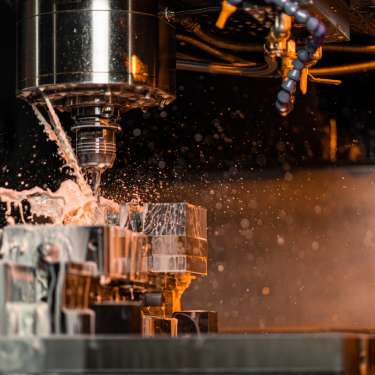
When you think of CNC machines, your heart rate probably doesn’t spike. This industrial equipment isn’t exactly the most fascinating topic, but we’re hoping to change that. Here are some surprisingly interesting facts about CNC machines that will give you a deeper appreciation and insight into their mechanics.
CNC Machining Began With Watchmaking
The roots of CNC (computer numerical control) machining trace back to watchmaking. During the late 1940s and early 1950s, innovators looked for a way to replicate complex watch parts reliably and accurately. This search led to the creation of the first numerical control machines.
Watchmakers needed a method to produce components with unparalleled precision, and CNC technology provided the solution. From crafting minuscule gears to cutting tiny springs, the demands of watchmaking initially pushed forward the development of CNC technology.
Training for CNC Milling Is Intense
CNC machines aren’t self-sufficient; they require the oversight of skilled technicians, and becoming proficient in CNC machining isn’t a walk in the park. Operators undergo rigorous training to master the intricacies of CNC milling.
Potential CNC machinists often participate in specialized programs that cover crucial skills, such as operating CNC equipment, understanding tool paths, and implementing safety protocols. Trained workers are also essential for keeping up with maintenance, and maintenance is very important for CNC machines.
To work with CNC machines, a firm grasp of computer programming and mechanical engineering principles is important. This demanding learning curve ensures that those who adapt to CNC machinery can navigate the complex tasks of the modern production environment with precision and competence.
Almost Every Industry Uses CNC Machines
While you might associate CNC machines primarily with large-scale manufacturing or aerospace sectors, they infiltrate nearly every industry. From automotive and aerospace to healthcare and electronics, CNC machines are working behind the scenes. Even industries focused on crafting consumer goods rely on CNC capabilities for creating everything from fashionable eyewear to musical instruments.
3D Printing Counts as CNC Machining
Did you know that 3D printing actually falls under the CNC umbrella? While it uses different materials and methods, the principle remains the same—the process follows a computer-generated model to create precise, three-dimensional objects layer by layer. Just like traditional CNC machining, 3D printing requires a blend of hardware, software, and digital design to bring concepts to life.
CNC machines hold a fascinating place in manufacturing history and technology. We hope you learned something new and surprisingly interesting with these facts about CNC machines!
Bio: Casey is a passionate copyeditor highly motivated to provide compelling SEO content in the digital marketing space. Her expertise includes a vast range of industries from highly technical, consumer, and lifestyle-based, with an emphasis on attention to detail and readability.




















